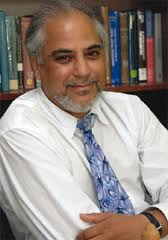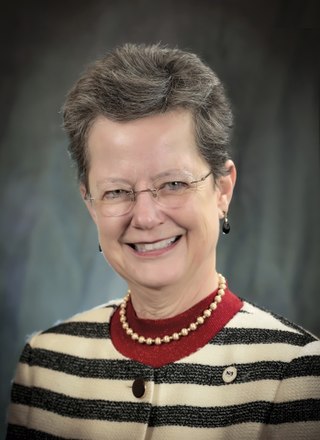Related Research Articles
Noemie Benczer Koller is a nuclear physicist. She was the first tenured female professor of Rutgers College.

Swapan Chattopadhyay CorrFRSE is an Indian American physicist. Chattopadhyay completed his PhD from the University of California (Berkeley) in 1982.
Gail Catherine McLaughlin is an American nuclear astrophysicist specializing in astrophysical neutrinos and the r-process for nucleosynthesis. She is Distinguished University Professor of Physics at North Carolina State University.

Margaret Galland Kivelson is an American space physicist, planetary scientist, and Distinguished Professor Emerita of Space Physics at the University of California, Los Angeles. From 2010 to the present, concurrent with her appointment at UCLA, Kivelson has been a research scientist and scholar at the University of Michigan. Her primary research interests include the magnetospheres of Earth, Jupiter, and Saturn. Recent research has also focused on Jupiter's Galilean moons. She was the Principal Investigator for the magnetometer on the Galileo Orbiter that acquired data in Jupiter's magnetosphere for eight years and a Co-Investigator on the FGM (magnetometer) of the earth-orbiting NASA-ESA Cluster mission. She is actively involved as a Co-Investigator on NASA's Themis mission, the magnetometer Team Leader for NASA's Europa Clipper Mission, as a member of the Cassini magnetometer team, and as a participant in the magnetometer team for the European JUICE mission to Jupiter. Kivelson has published over 350 research papers and is co-editor of a widely used textbook on space physics.

John M. "Jack" Carpenter was an American nuclear engineer known as the originator of the technique for utilizing accelerator-induced intense pulses of neutrons for research and developing the first spallation slow neutron source based on a proton synchrotron, the Intense Pulsed Neutron Source (IPNS). He died on 10 March 2020.

Anne L'Huillier is a French physicist, and professor of atomic physics at Lund University in Sweden.
George Curriden Baldwin was an American theoretical and experimental physicist. He was a professor of nuclear engineering at Rensselaer Polytechnic Institute and a scientist working at the General Electric Research Laboratory and at the Los Alamos National Laboratory. He wrote a book on Nonlinear Optics and authored or co-authored over 130 technical papers.
Olga Anatolevna Kocharovskaya is a distinguished professor of physics at Texas A&M University, known for her contributions to laser physics, quantum optics and gamma ray modulation.
Gattamraju Ravindra Kumar is an Indian laser physicist and a senior professor of Nuclear and Atomic Physics at Tata Institute of Fundamental Research. Known for his research on Ultrashort pulse and Warm dense matter, Kumar is an elected fellow of the Indian Academy of Sciences and the Indian National Science Academy. The Council of Scientific and Industrial Research, the apex agency of the Government of India for scientific research, awarded him the Shanti Swarup Bhatnagar Prize for Science and Technology, one of the highest Indian science awards, for his contributions to physical sciences in 2003. He is also a recipient of the B. M. Birla Science Prize and Infosys Prize.
Elizabeth J. (Betsy) Beise is a Professor of Physics and Associate Provost at the University of Maryland, College Park. She works on quantum chromodynamics, nucleon structure and fundamental symmetries.

Cynthia E. Keppel is the Hall A and C Leader at the Thomas Jefferson National Accelerator Facility and a Fellow of the American Physical Society. Her research focuses on the quark-gluon structure of the nucleon, while also considering applications of nuclear physics in medicine. Previously, she was a founding member of the Hampton University Proton Therapy Institute.

Jagdish Narayan is an Indian-born American engineer. Since 2001, he has served as the John C. C. Fan Family Distinguished Chair Professor in the Materials Science and Engineering Department at North Carolina State University. He is also the distinguished visiting scientist at Oak Ridge National Laboratory. Narayan has published above 500 high-impact journal articles, with his discoveries covered in over 40 US and international patents. His body of work can be segregated into highly nonequilibrium laser processing of novel nanomaterials, including Q-carbon, Q-BN, diamond and c-BN related materials. These research articles have received over 31,000 Google Citations with h-index >85. Narayan and his students discovered Q-carbon as the new allotrope, thereby finding a new route to fabricate diamond and related materials in ambient conditions, resulting in properties and applications ranging from high-temperature superconductivity in boron-doped Q-carbon to hardness than diamond in Q-carbon to enhanced field-emission in Q-carbon to nitrogen-doped nanodiamonds for quantum computing, nanosensing and solid-state devices.
Sandra Gail Biedron is an American physicist who serves as the Director of Knowledge Transfer for the Center for Bright Beams as well as professor in Electrical & Computer Engineering and Mechanical Engineering at the University of New Mexico, where in 2021 she mentors nine graduate students and two post-doctoral researchers. Her research includes the development, control, operation and use of laser and particle accelerator systems. She is also Chief Scientist of Element Aero, a consulting and R&D company incorporated in 2002. She was elected Fellow of the American Physical Society in 2013.
Alice Elizabeth White is an American physicist. She is a professor and chair at the Boston University College of Engineering. Previously, she was Chief Scientist at Bell Labs. She is a fellow of the APS, the IEEE and the OSA.

Julia Mae Phillips is an American physicist. She began her career in materials research on thin films on semiconductors and has transitioned into leadership roles in science policy. She currently serves on the National Science Board.
April S. Brown is an American electrical engineer and materials scientist in the Duke University Pratt School of Engineering, where she is a professor of electrical and computer engineering and the former John Cocke Professor of Electrical and Computer Engineering.
Aviva Brecher is a Romanian-American applied physicist and transportation scientist who studied magnetic levitation for many years at the John A. Volpe National Transportation Systems Center, a research center of the United States Department of Transportation.
Bernard Frois is a French nuclear physicist, energy policy advisor, and science manager.
Katherine C. Harkay is an American physicist working on particle accelerators.
Andrea "Annie" Kritcher is an American nuclear engineer and physicist who works at the Lawrence Livermore National Laboratory. She was responsible for the development of Hybrid-E, a capsule that enables inertial confinement fusion. She was elected Fellow of the American Physical Society in 2022.
References
- ↑ Nuclear Physics Staff, US Department of Energy Office of Science, retrieved 2023-02-04
- 1 2 3 "Michelle Shinn, Ph.D.", 2019 Distinguished Alumni, Oklahoma State University College of Arts and Sciences, 25 September 2020, retrieved 2023-02-04
- ↑ "Fellows nominated in 2012 by the Forum on Industrial & Applied Physics", APS Fellows archive, American Physical Society, retrieved 2023-02-04